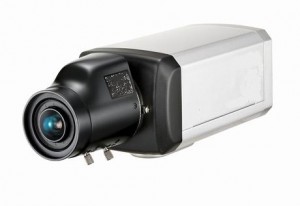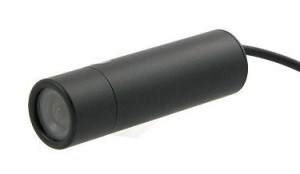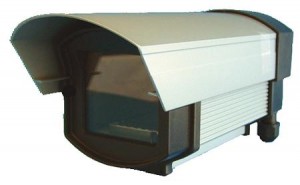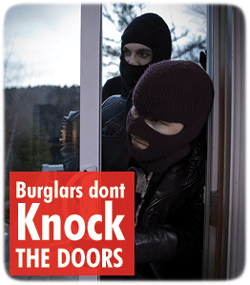I WATCH TECHNICAL EXPERT VIEW: CHOOSING A CAMERA
The traditional CCTV camera has a very industrial style and therefore many people would not find this suitable for use in homes or shops. Cameras having Thermostatic heating elements within the casing also reduce condensation and misting.
Top end cameras are usually specified without a lens, this provides required focal length and field of view. Motorised pan and zoom lenses allow an observer to follow or move in closer to the person or object in view.
There are two common types of CCTV cameras, CMOS and CCD. CMOS based cameras are generally cheaper but do not produce as clear or sharp images as CCD cameras. CCD cameras provide pin-point clarity and should be used wherever possible.
Integrated cameras and lenses often referred to as “Bullet Cameras” are sealed to prevent ingress of moisture. Most bullet cameras are fitted with a 3.6mm lens which gives a 72 deg angle of view which is suitable for most domestic and small commercial applications.
Choosing a Camera Specification: The main criteria of a camera’s performance are its sensitivity and resolution. Secondary considerations are colour or monochrome and indoor or outdoor suitability.
While sensitivity is the camera’s ability to respond to light levels, resolution defines the amount of picture detail in the image produced by the camera.
Camera Resolution: This is expressed as the number of television lines that the cameras is capable to producing. For example a bullet camera is 420 TVL. The same range camera colour model is 380 TVL. These are typical figures for CCD cameras, CMOS camera are usually lower.
Higher resolution cameras of over 500TVL are available for special applications. For example, trying to read the number plate of a high speed vehicle. Below 300 TVL and using CMOS cameras even facial feature will be difficult to identify.
Environmental Condition: camera resolution also depends on the light levels and shadow conditions.
Indoor/Outdoor Cameras: If a camera is to be sited outside and is not going to be mounted in an enclosure it must be classed as weather resistant. Such cameras have their cable entry points sealed. Most bullet cameras come with trailing leads that allow the connections to be made inside the building. Typical lead length is 45 cm. Cameras with flimsy plastic enclosure should definitely be rejected. The normal range of bullet cameras have strong aluminium bodies and sealed cable entry points.
Light Levels: Choosing the correct camera to operate in the ambient light conditions is possibly the most important, although most tricky specification to understand.
Light levels are usually measured in Lux. This is a measure of the light energy arriving on an area 1m^2 of surface per second.
Typical light levels are:
Full Summer Sunlight: 50,000 Lux.
Dull Daylight: 10,000 Lux.
Shop/Office environment: 500 Lux.
Dawn/Dusk: 1-10 Lux.
Main Street Lighting: 30 Lux.
Side Street Lighting: 0.5-3 Lux.
The golden rule when deciding which camera to use for a given lighting condition is not to choose aone that will only just give a picture. Try to give the camera approximately 10 times its quoted minimum scene illumination. Most cameras will be able to cope with excess light. The major problem is will they do not have enough light to produce a picture. Monochrome cameras respond well to additional IR lighting. Colour cameras also offer IR illumination but will switch to monochrome at night even with the IR LEDs turned on. These are true night-vision cameras and are rate at 0 Lux.










September 16th, 2010 at
Like I sometimes say, Turn your dream into reality.
September 16th, 2010 at
Ohh Wow !! Thanks for such nice compliment.
September 18th, 2010 at
good post, added you to my RSS reader.
September 19th, 2010 at
good post, added you to my RSS reader.
September 20th, 2010 at
Well written post, well researched and useful for me in the future.I am so happy you took the time and effort to make this. Kind regards
September 21st, 2010 at
great post! I used google translation to translate it…
September 21st, 2010 at
How do i subscribe via rss feed.
September 22nd, 2010 at
As the guy above said
September 22nd, 2010 at
Seriously happy i stumbled upon this excellent website, will make sure to book mark it so i can visit regularly.
September 22nd, 2010 at
just click on the RSS image and follow the link.
September 27th, 2010 at
Awesome